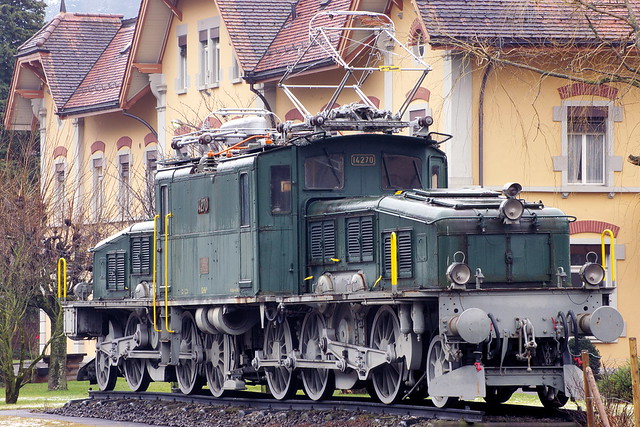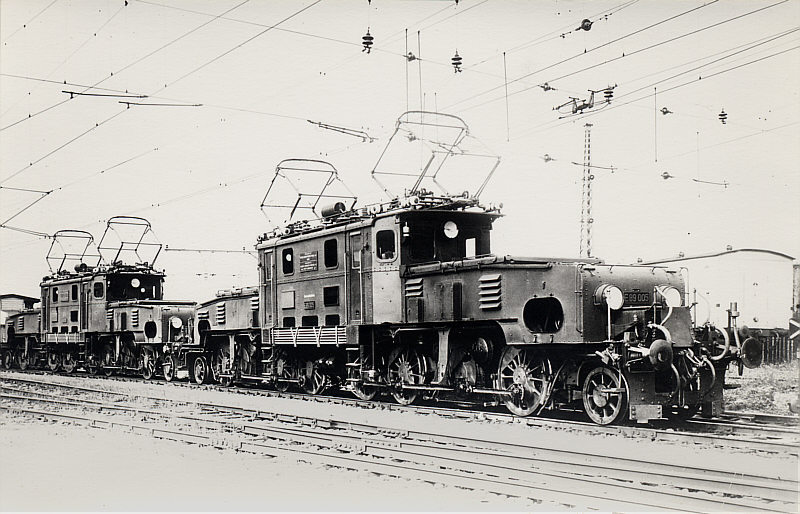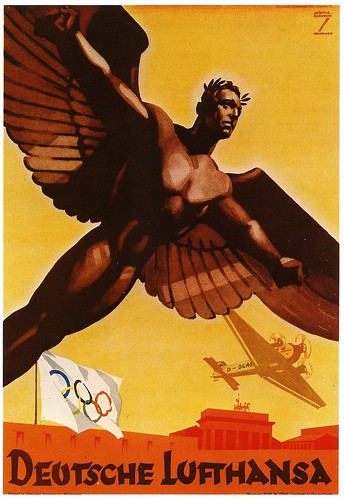The first was G1 (W103), powered by 50 hp six-inline 3-liter petrol engine:
Sunday, October 31, 2010
Saturday, October 30, 2010
Cormoran & Gwook
 Cormoran, designed by Pablo J. Álvarez of Fantasy Planes
Cormoran, designed by Pablo J. Álvarez of Fantasy PlanesGwook , designed by lnago @ LJ
Artwork by lnago for atlantic_rep @ LJ
CLICK TO ENLARGE!
Two Wheels, Two Letters
------------------
Attributed by many sources as "Czech", this poster has a Belgian address on the left and no signs of an importer / distributor in Czechoslovak Republic. The motorcycle itself is Belgian.
Friday, October 29, 2010
Thursday, October 28, 2010
Invincible Caproni
This fragile airplane, designed by Rodolfo Verduzio, is still holding the world altitude record for piston-engine planes, set on October 22, 1938: 17,083 m (56,047 ft).
Tuesday, October 26, 2010
Monday, October 25, 2010
Sunday, October 24, 2010
British Empire Exhibition
"During the six month duration of the Empire Exhibition in 1938, 13 million people were counted through the turnstiles to see a Bellahouston Park, Glasgow transformed into a city of striking modernist architecture, wide boulevards, fountains and other stunning water features."
Saturday, October 23, 2010
Zeppelin Piano
The LZ129 Hindenburg featured the first piano ever to be carried on a passenger aircraft.
To meet the strict weight limits of a lighter-than-air dirigible, the Zeppelin company commissioned the renowned piano making firm of Julius Blüthner to create a lightweight aluminum alloy piano, and the Julius Blüthner Pianofortefabrik created a small grand piano that weighed only 162 kg (356 lbs). The frame, rim, fallboard, and top lid were made of duralumin, and the legs, back bracing, and lyre were made of hollow duralumin tubing.
 Hindenburg lounge under construction
Hindenburg lounge under construction
Zeppelin chief designer Ludwig Dürr standing, at right of photo, Professor Franz Wagner at the piano, Captain Ernst Lehmann to Wagner's right
Full story & more images @ Airships.net
To meet the strict weight limits of a lighter-than-air dirigible, the Zeppelin company commissioned the renowned piano making firm of Julius Blüthner to create a lightweight aluminum alloy piano, and the Julius Blüthner Pianofortefabrik created a small grand piano that weighed only 162 kg (356 lbs). The frame, rim, fallboard, and top lid were made of duralumin, and the legs, back bracing, and lyre were made of hollow duralumin tubing.
 Hindenburg lounge under construction
Hindenburg lounge under constructionZeppelin chief designer Ludwig Dürr standing, at right of photo, Professor Franz Wagner at the piano, Captain Ernst Lehmann to Wagner's right
Full story & more images @ Airships.net
Friday, October 22, 2010
Alpine Crocodiles
Crocodile electric locomotives are so called because they have long "noses" at each end, reminiscent of the snout of a crocodile. These contain the motors and drive axles, and are connected by an articulated center section. The center section usually contains the crew compartments, pantographs and transformer.
 The original "Crocodiles" were the series SBB Ce 6/8 II and SBB Ce 6/8 III locomotives of the SBB, Swiss Federal Railways, built between 1919 and 1927 (above). These locomotives were developed for pulling heavy goods trains on the steep tracks of the Gotthardbahn from Lucerne to Chiasso, including the Gotthard Tunnel.
The original "Crocodiles" were the series SBB Ce 6/8 II and SBB Ce 6/8 III locomotives of the SBB, Swiss Federal Railways, built between 1919 and 1927 (above). These locomotives were developed for pulling heavy goods trains on the steep tracks of the Gotthardbahn from Lucerne to Chiasso, including the Gotthard Tunnel.
Very similar locomotives were used in Austria as Austrian Federal Railways (Österreichische Bundesbahn) classes ÖBB 1089 and ÖBB 1189 (below), and are often known as 'Austrian Crocodiles'.
 The original "Crocodiles" were the series SBB Ce 6/8 II and SBB Ce 6/8 III locomotives of the SBB, Swiss Federal Railways, built between 1919 and 1927 (above). These locomotives were developed for pulling heavy goods trains on the steep tracks of the Gotthardbahn from Lucerne to Chiasso, including the Gotthard Tunnel.
The original "Crocodiles" were the series SBB Ce 6/8 II and SBB Ce 6/8 III locomotives of the SBB, Swiss Federal Railways, built between 1919 and 1927 (above). These locomotives were developed for pulling heavy goods trains on the steep tracks of the Gotthardbahn from Lucerne to Chiasso, including the Gotthard Tunnel.Very similar locomotives were used in Austria as Austrian Federal Railways (Österreichische Bundesbahn) classes ÖBB 1089 and ÖBB 1189 (below), and are often known as 'Austrian Crocodiles'.
Images: Chris Walters @ trainspo.com & voba-medien.de
Thursday, October 21, 2010
Japanese Futurism
 "Defense for the country, tobacco for the society"
"Defense for the country, tobacco for the society"South Kyoto Tobacco Sellers' Union,
1937
via Pink Tentacle
Wednesday, October 20, 2010
Red, Red, Red
 Soviet poster advertising Avtodor and Aviakhim - "voluntary aid" to automobile construction, aviation and chemical warfare".
Soviet poster advertising Avtodor and Aviakhim - "voluntary aid" to automobile construction, aviation and chemical warfare".via paul.malon @ Flickr
Tuesday, October 19, 2010
Pickwick NiteCoaches
 In mid-1928 Pickwick company introduced the revolutionary Nite Coach, a 26-passenger all-metal double-decked sleeping coach with elevated driving compartment and interchangeable power pack. The Nite Coach featured a semi-monocoque steel framework covered by Duralumin panels, adapted by Dwight E. Austin for motor coach use.
In mid-1928 Pickwick company introduced the revolutionary Nite Coach, a 26-passenger all-metal double-decked sleeping coach with elevated driving compartment and interchangeable power pack. The Nite Coach featured a semi-monocoque steel framework covered by Duralumin panels, adapted by Dwight E. Austin for motor coach use.Monday, October 18, 2010
Sunday, October 17, 2010
Pacific Wings
 Ryan STM (floats) and Fokker T.IVa over the Dutch East Indies
Ryan STM (floats) and Fokker T.IVa over the Dutch East IndiesLate 1941
via kampfflieger @ Dieselpunks LJ Community
Saturday, October 16, 2010
Friday, October 15, 2010
Thursday, October 14, 2010
Blackpool Balloons
 Commissioned in 1933, "Balloon" tramway cars were built by English Electric during 1934 and 1935, the first being presented to Blackpool on 10 December 1934. 27 were delivered, of which thirteen were open-topped.
Commissioned in 1933, "Balloon" tramway cars were built by English Electric during 1934 and 1935, the first being presented to Blackpool on 10 December 1934. 27 were delivered, of which thirteen were open-topped.Read more @ Dieselpunks.org
Wednesday, October 13, 2010
Tanks in Moscow
 Entrance to the former War & Navy Commissariat building, built 1934
Entrance to the former War & Navy Commissariat building, built 1934Architects: Lev Rudnev & Lev Muntz
Tuesday, October 12, 2010
Monday, October 11, 2010
Sunday, October 10, 2010
Saturday, October 9, 2010
Friday, October 8, 2010
Thursday, October 7, 2010
Wednesday, October 6, 2010
Topper Car. Now With a Trailer
 The car originally built for the Topper movie was a 1936 Buick Roadmaster chassis with a custom body by the coachbuilding firm of Bohman & Schwartz of Los Angeles, CA.
The car originally built for the Topper movie was a 1936 Buick Roadmaster chassis with a custom body by the coachbuilding firm of Bohman & Schwartz of Los Angeles, CA.The car still exists today in slightly modified form on a Chrysler chassis from the '50s.
From the Fedora Lounge
Tuesday, October 5, 2010
Cocktail Break
Clockwise from left:
- Chrome and bakelite cocktail cups by Revere Copper & Brass, 1938 (Mood Indigo);
- Set of three shakers (Adesso);
- Martini set (three of six shown), "Hunt" pattern, Austrian/German, 1920s (Elise Abrams Antiques);
- Cocktail set by Erik Magnussen for Gorham, 1929 (Lauren Stanley Silver);
- Martini mixer by Porter Blanchard, 1950 (Lauren Stanley Silver);
- Amethyst cut crystal shaker (Pullman Gallery);
- Bar tool set by Glo-Hill (Mood Indigo);
- "Manhattan" cups by Norman Bel Geddes for Revere (Mood Indigo);
- Chrome shaker (JuJuToo);
- Shaker and tray by Anton Michelsen for Kay Fisker (DouglasRosin);
- Aluminum cocktail set by Russel Wright (Wright20).
Source: themagazineantiques.com
Monday, October 4, 2010
Sunday, October 3, 2010
Short Calcutta
 Imperial Airways City of Khartoum
Imperial Airways City of Khartoum(picture probably taken in Egypt, before Dec. 31, 1935)
Library of Congress, Matson Collection
Uploaded by A30yoyo @ Flickr
Saturday, October 2, 2010
De Dageraad, Amsterdam
Friday, October 1, 2010
Soviet Motor Torpedo Boat
The G-5 was a single-step, hydroplaning design with a whaleback upper hull. It was mainly built from duralumin which saved a significant amount of weight, but greatly complicated its use in service because of duralumin's susceptibility to galvanic corrosion in salt water. One captured Soviet torpedo boat commander said that G-5s could only be kept in the water for 5–7 days during the summer and 10–15 days during the winter before it had to be removed from the water and treated with anti-corrosion measures.
 The hull was divided into three compartments by two transverse bulkheads. The superstructure was very small to reduce top-heaviness, and crewmen could not stand up inside it.
The hull was divided into three compartments by two transverse bulkheads. The superstructure was very small to reduce top-heaviness, and crewmen could not stand up inside it.
The G-5 was designed to use a version of the Mikulin AM-34 aircraft engine adapted for naval use as the GAM-34. The two engines were fitted in the forward compartment of the hull. Each engine had its own transmission and drove a bronze propeller .67 m (2 ft 2 in) in diameter. The initial version of the GAM-34 was less powerful than planned at only 675 bhp (503 kW) and the initial Series 7 boats could only reach 45 knots (52 mph; 83 km/h). However the minimum speed was 18 knots (21 mph; 33 km/h) which caused a great deal of trouble when trying to moor and when maneuvering in close proximity.
 The gun armament initially consisted of a single 7.62 mm (0.300 in) machine gun, but this was upgraded to a 12.7 mm (0.50 in) DShK machine gun in later models. Some later boats carried two DShKs although the mounts varied; some were placed in a tub in the forecastle, but others carried theirs in a rotating turret behind the superstructure, above the torpedoes. Some boats carried 82 mm (3.2 in) ROFS-82 or 132 mm (5.2 in) ROFS-132 rocket launchers in fixed mounts above and behind the wheelhouse.
The gun armament initially consisted of a single 7.62 mm (0.300 in) machine gun, but this was upgraded to a 12.7 mm (0.50 in) DShK machine gun in later models. Some later boats carried two DShKs although the mounts varied; some were placed in a tub in the forecastle, but others carried theirs in a rotating turret behind the superstructure, above the torpedoes. Some boats carried 82 mm (3.2 in) ROFS-82 or 132 mm (5.2 in) ROFS-132 rocket launchers in fixed mounts above and behind the wheelhouse.
 Approximately 300 G-5s were built. 152 of the Series 7, 8 and 9 boats were built between 1934 and 1936. 20 Series 10 boats were built in 1937, another 76 in 1938–39 and five in 1939–40. 39 Series 11 boats were built beginning in 1941 and production may have continued during the war. Of all G-5s 73 were lost in the action. Four were exported to the Spanish Republican Navy during the Spanish Civil War and others were transferred to North Korea after the war. Three were captured by the Finns, but only two were used before all three had to be returned to the Soviets after the Moscow Armistice in 1944.
Approximately 300 G-5s were built. 152 of the Series 7, 8 and 9 boats were built between 1934 and 1936. 20 Series 10 boats were built in 1937, another 76 in 1938–39 and five in 1939–40. 39 Series 11 boats were built beginning in 1941 and production may have continued during the war. Of all G-5s 73 were lost in the action. Four were exported to the Spanish Republican Navy during the Spanish Civil War and others were transferred to North Korea after the war. Three were captured by the Finns, but only two were used before all three had to be returned to the Soviets after the Moscow Armistice in 1944.
 The hull was divided into three compartments by two transverse bulkheads. The superstructure was very small to reduce top-heaviness, and crewmen could not stand up inside it.
The hull was divided into three compartments by two transverse bulkheads. The superstructure was very small to reduce top-heaviness, and crewmen could not stand up inside it.The G-5 was designed to use a version of the Mikulin AM-34 aircraft engine adapted for naval use as the GAM-34. The two engines were fitted in the forward compartment of the hull. Each engine had its own transmission and drove a bronze propeller .67 m (2 ft 2 in) in diameter. The initial version of the GAM-34 was less powerful than planned at only 675 bhp (503 kW) and the initial Series 7 boats could only reach 45 knots (52 mph; 83 km/h). However the minimum speed was 18 knots (21 mph; 33 km/h) which caused a great deal of trouble when trying to moor and when maneuvering in close proximity.
 The gun armament initially consisted of a single 7.62 mm (0.300 in) machine gun, but this was upgraded to a 12.7 mm (0.50 in) DShK machine gun in later models. Some later boats carried two DShKs although the mounts varied; some were placed in a tub in the forecastle, but others carried theirs in a rotating turret behind the superstructure, above the torpedoes. Some boats carried 82 mm (3.2 in) ROFS-82 or 132 mm (5.2 in) ROFS-132 rocket launchers in fixed mounts above and behind the wheelhouse.
The gun armament initially consisted of a single 7.62 mm (0.300 in) machine gun, but this was upgraded to a 12.7 mm (0.50 in) DShK machine gun in later models. Some later boats carried two DShKs although the mounts varied; some were placed in a tub in the forecastle, but others carried theirs in a rotating turret behind the superstructure, above the torpedoes. Some boats carried 82 mm (3.2 in) ROFS-82 or 132 mm (5.2 in) ROFS-132 rocket launchers in fixed mounts above and behind the wheelhouse. Approximately 300 G-5s were built. 152 of the Series 7, 8 and 9 boats were built between 1934 and 1936. 20 Series 10 boats were built in 1937, another 76 in 1938–39 and five in 1939–40. 39 Series 11 boats were built beginning in 1941 and production may have continued during the war. Of all G-5s 73 were lost in the action. Four were exported to the Spanish Republican Navy during the Spanish Civil War and others were transferred to North Korea after the war. Three were captured by the Finns, but only two were used before all three had to be returned to the Soviets after the Moscow Armistice in 1944.
Approximately 300 G-5s were built. 152 of the Series 7, 8 and 9 boats were built between 1934 and 1936. 20 Series 10 boats were built in 1937, another 76 in 1938–39 and five in 1939–40. 39 Series 11 boats were built beginning in 1941 and production may have continued during the war. Of all G-5s 73 were lost in the action. Four were exported to the Spanish Republican Navy during the Spanish Civil War and others were transferred to North Korea after the war. Three were captured by the Finns, but only two were used before all three had to be returned to the Soviets after the Moscow Armistice in 1944.Info: Wiki (EN)
Subscribe to:
Posts (Atom)
































